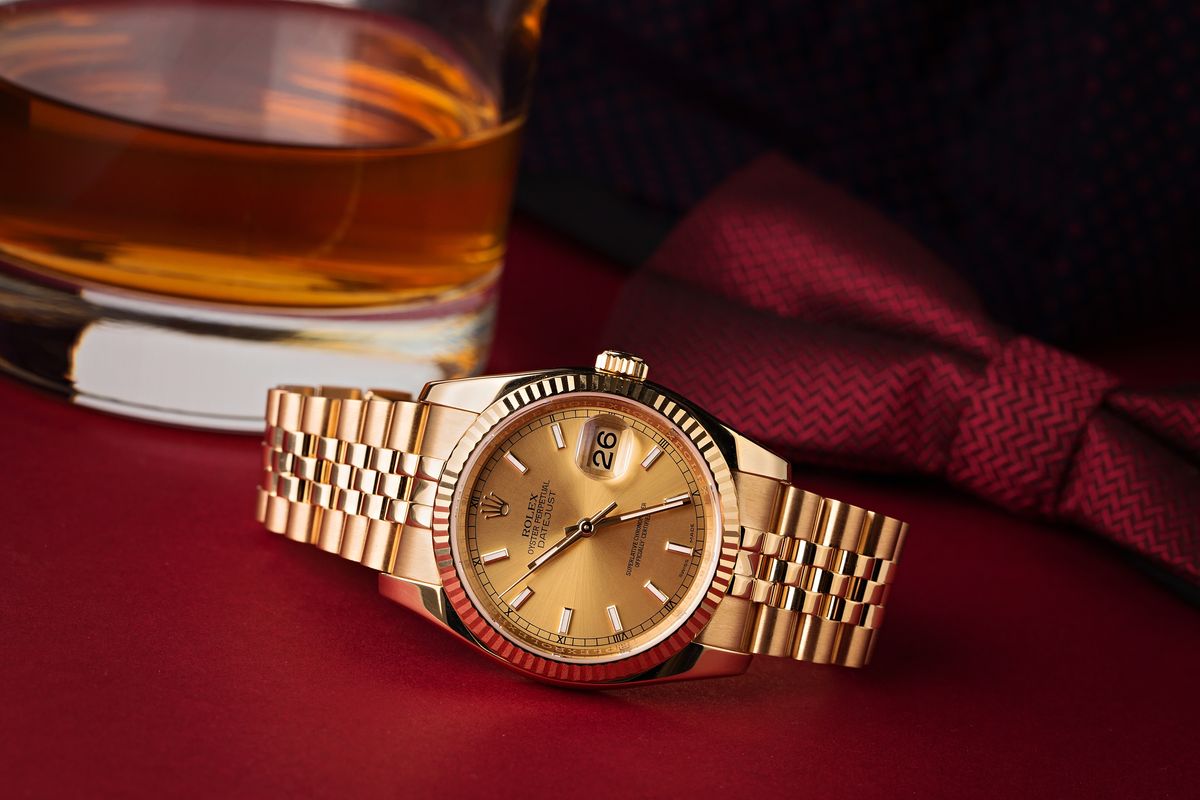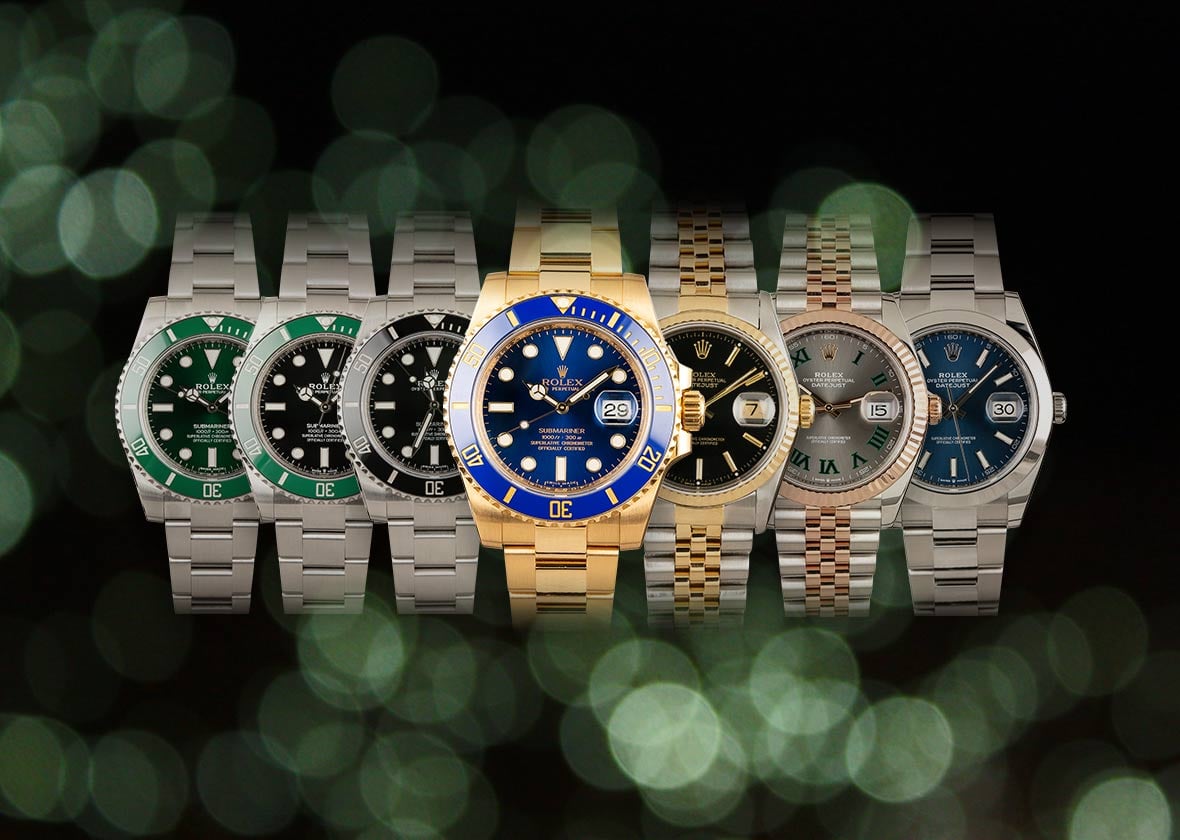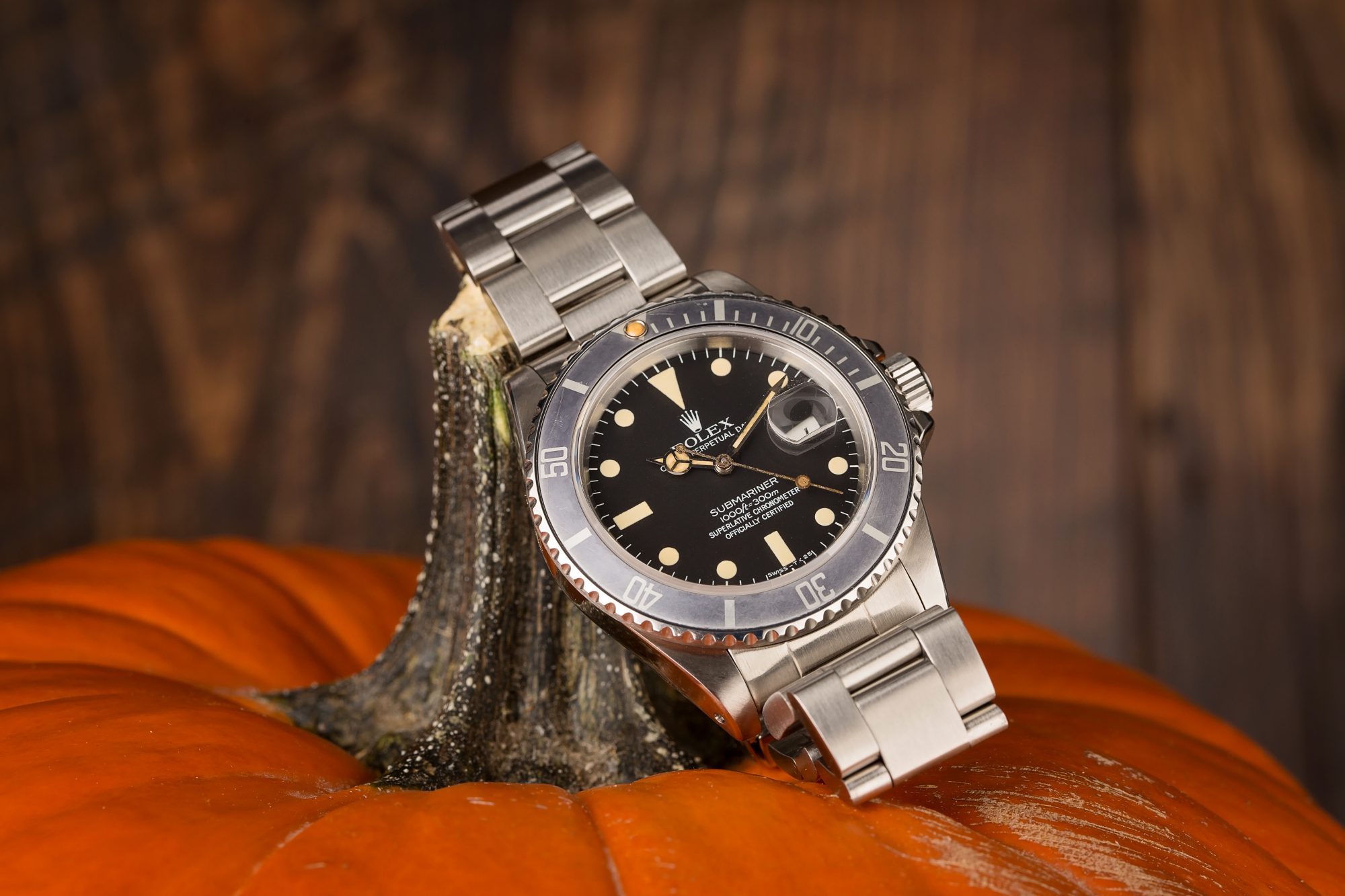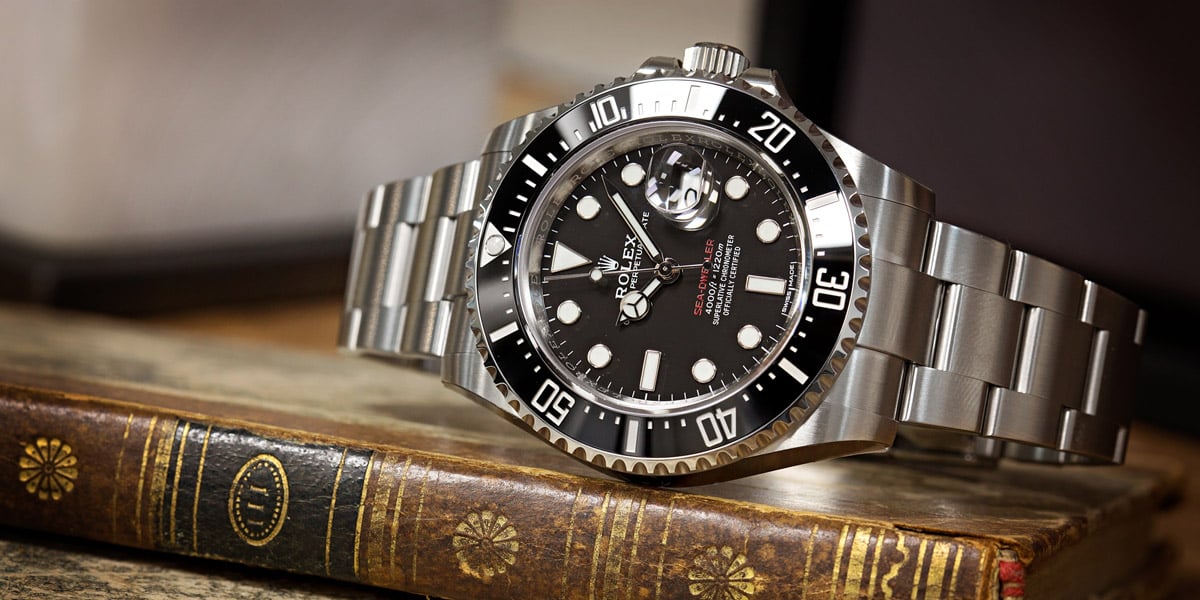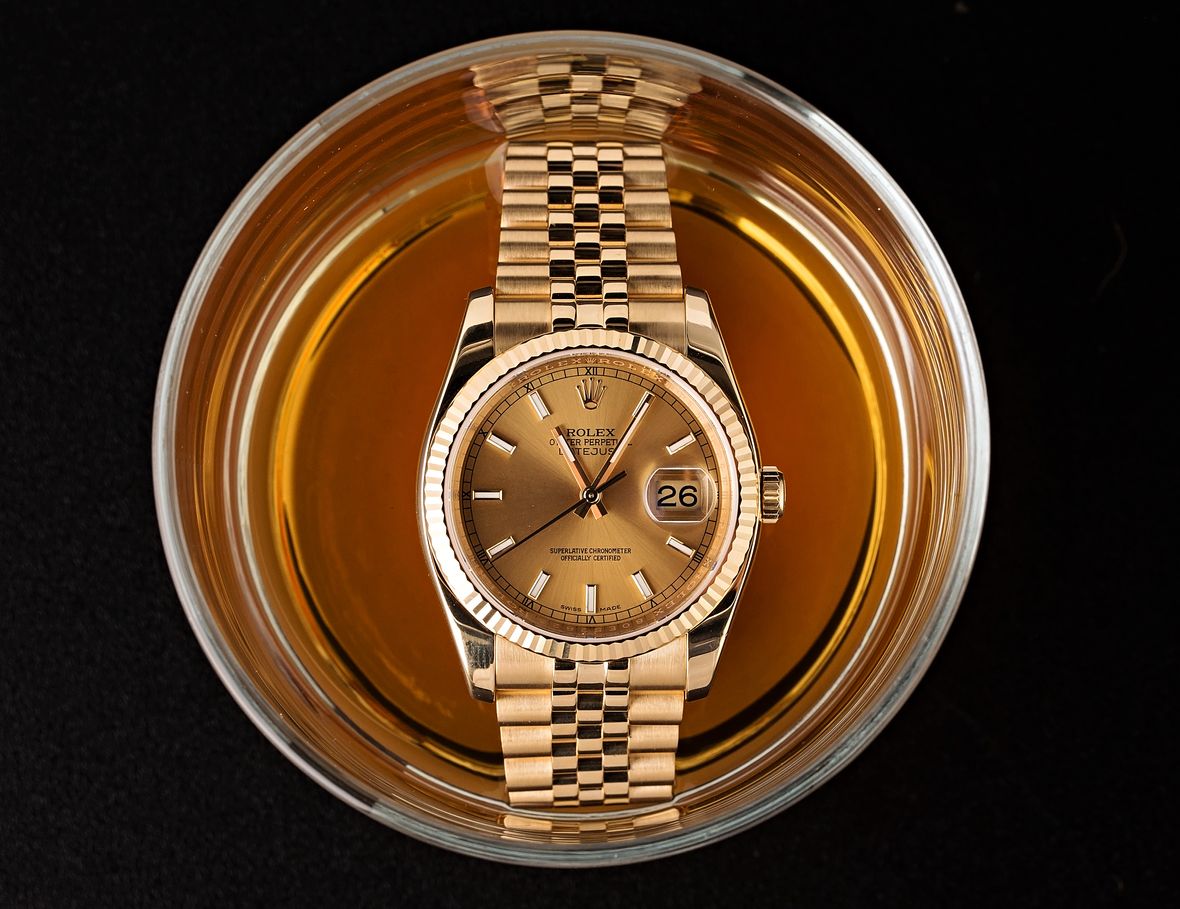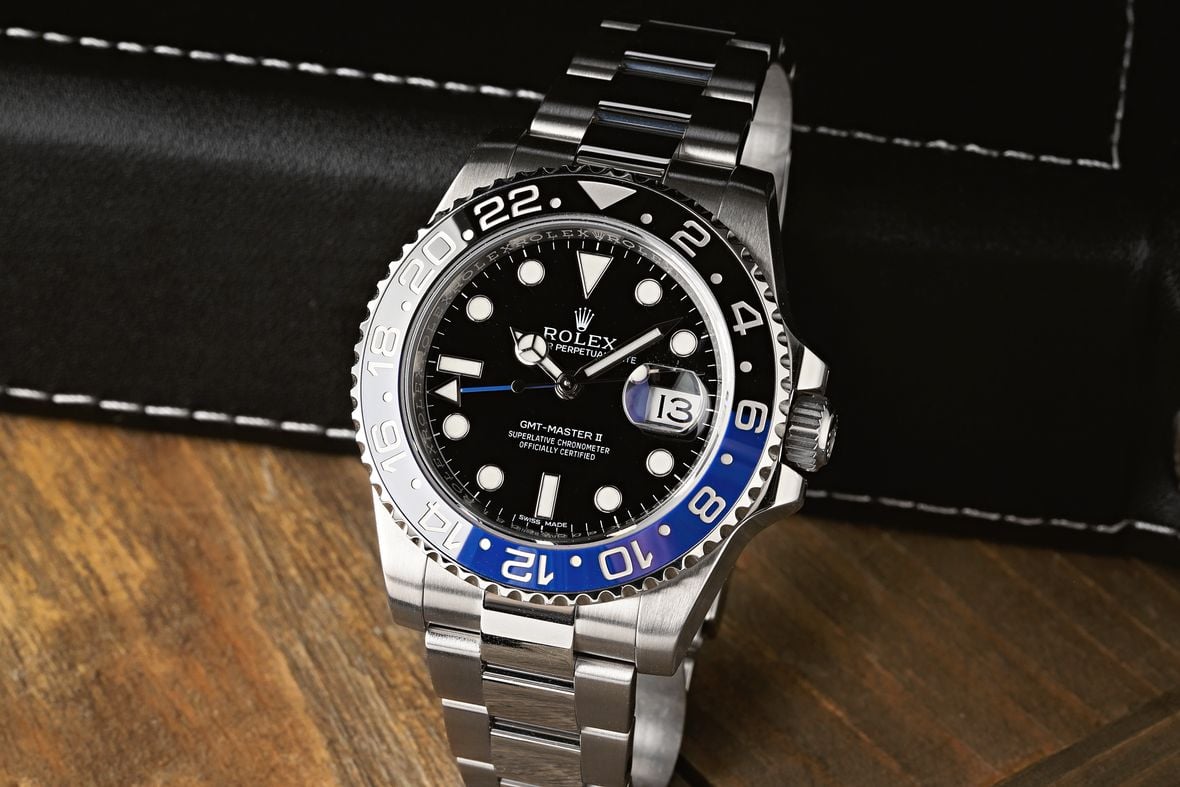As the world’s most famous luxury watch manufacturer, Rolex’s catalog is packed full of iconic models. While the word “iconic” frequently gets overused in the watch industry, there are few timepieces more deserving of the term than those that make up the Rolex lineup. And among these, it is arguably the Submariner and the Datejust that are regarded as being the absolute most famous Rolex watches of all time.
Both the Submariner and the Datejust rate about equal in the status symbol hierarchy, and both watches represent pioneering timepieces that forever set the standard for their respective genres. However, despite both watches ranking among the most popular Rolex models of all time, the Submariner and the Datejust are actually very different timepieces. So, which one of these iconic Rolex models belongs on your wrist?
Rolex Submariner
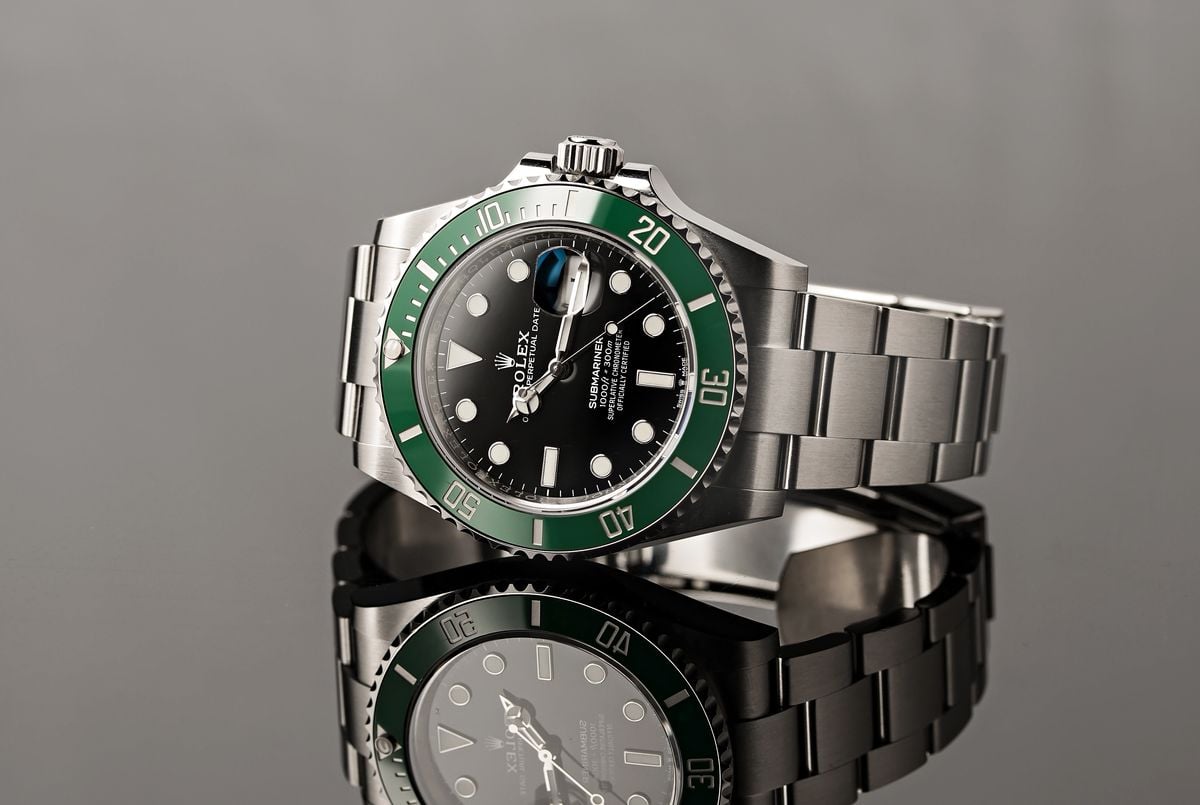
Submariner Collection Key Facts
Introduced: 1953
Case Size: 41mm
Materials: Stainless Steel; Yellow Rolesor; Yellow Gold; White Gold
Features: Time-only; Time + Date
Dial: Black; Blue
Bezel: Unidirectional, 60-minute timing scale
Movement: Cal. 3230; Cal. 3235
Water Resistance: 300 meters / 1,000 feet
Bracelet: Oyster
Retail Price Range: $8,100 – $39,650
Click here for our Ultimate Buying Guide on the Rolex Submariner.
Rolex Datejust
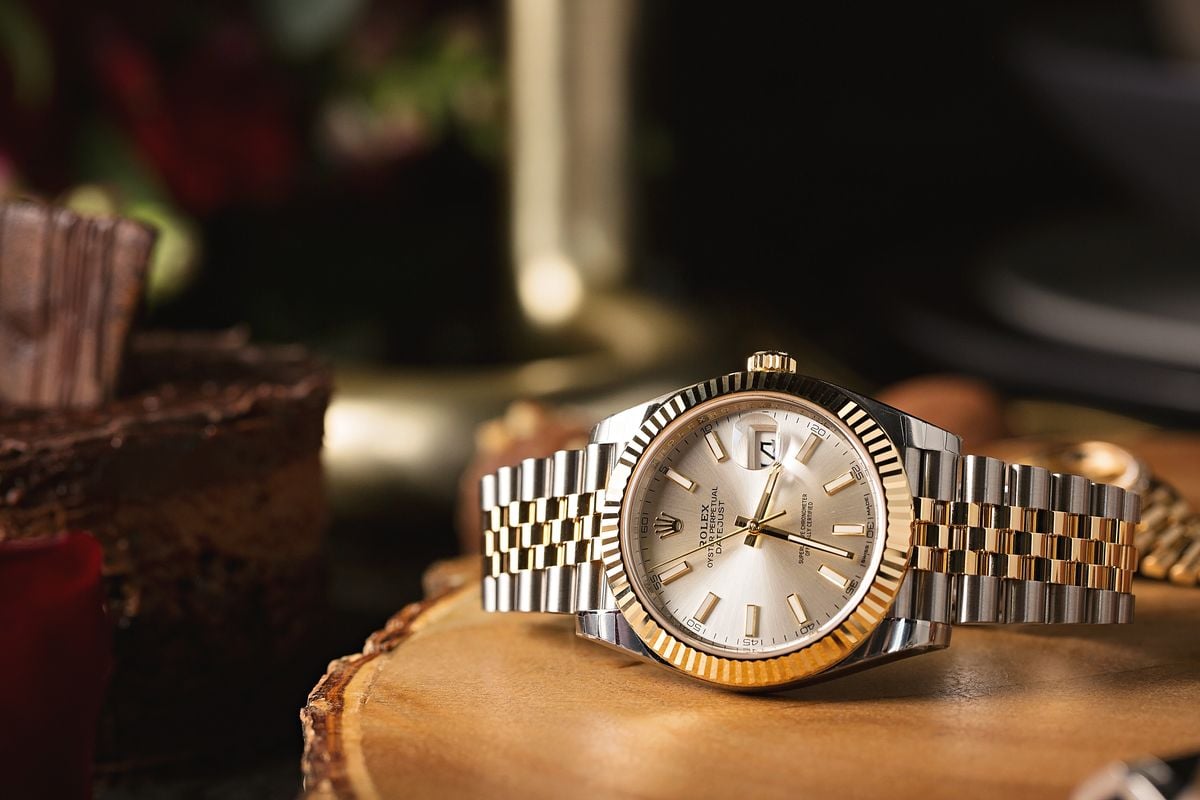
Datejust Collection Key Facts
Introduced: 1945
Case Size: 28mm; 31mm; 36mm; 41mm
Materials: Stainless Steel; Yellow Rolesor; White Rolesor; Everose Rolesor; Yellow Gold; White Gold; Everose Gold
Features: Time + Date
Dial: Multiple Options Available
Bezel: Fixed, Smooth; Fluted; Gem-Set
Movement: Cal. 2236; Cal. 3235
Water Resistance: 100 meters / 330 feet
Bracelet: Oyster; Jubilee; President
Retail Price Range: $6,500 – $57,900
Click here for our Ultimate Buying Guide on the Rolex Datejust.
Rolex Submariner vs. Datejust Overview
Before we get into all the details about how the Rolex Submariner differs from the Rolex Datejust, it is first important to understand what each watch model actually is and what Rolex originally designed them to do. In short, the Submariner is a purpose-built professional dive watch, while the Datejust is a robust and reliable watch designed for everyday wear and use.
Since the Submariner was specifically designed to be used underwater, it includes a number of additional design elements that cater to the needs of scuba divers. Features such as increased water resistance, a rotating timing bezel, a highly luminous display, and a wetsuit extension in the clasp all help make the Rolex Submariner the perfect underwater timekeeping companion.
On the other hand, the Rolex Datejust was not built for one specific sport or lifestyle activity. Instead, the Datejust was designed to be the only watch that a person would ever need, offering a versatile style that can effortlessly be worn in both formal and casual situations. Given that the Datejust is intended to be worn by a much wider variety of people and paired with many different types of attire, the collection is available with exponentially more options in regards to case size, materials, and overall configuration.
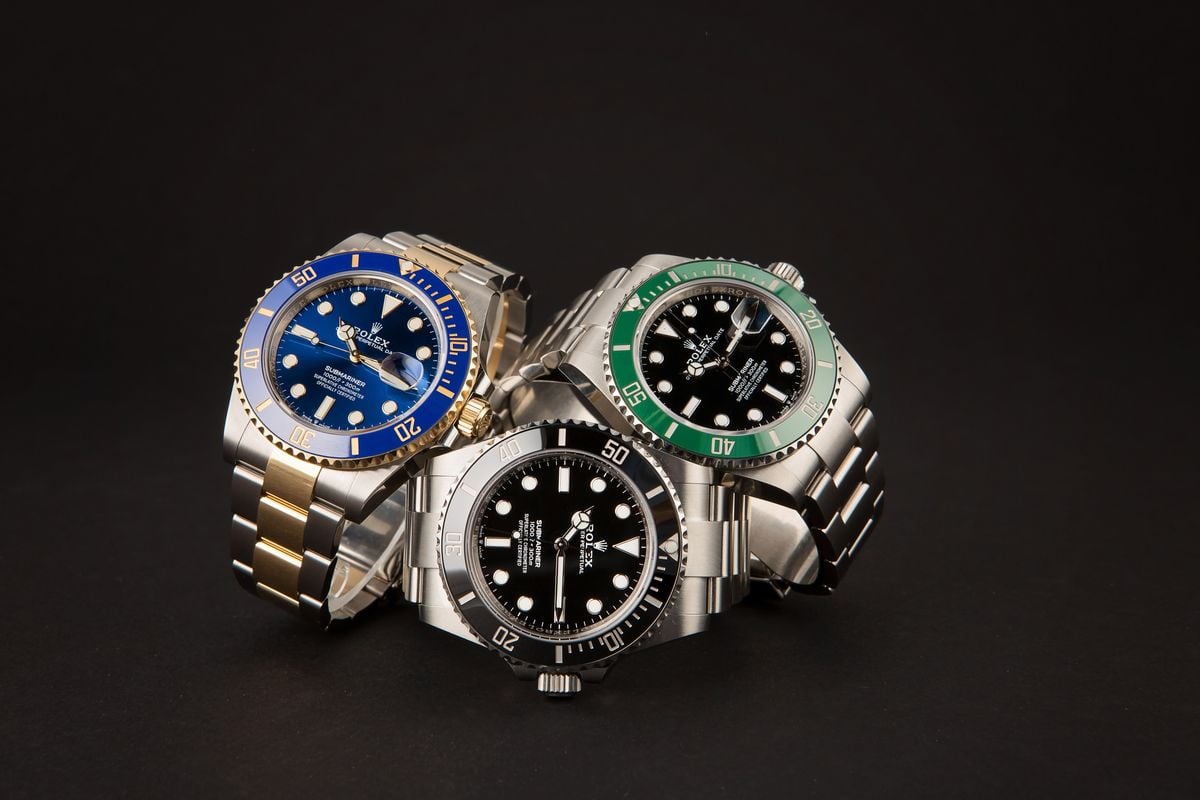
Why Compare the Submariner to the Datejust?
On the face of it, comparing the Rolex Submariner (the world’s most famous luxury dive watch) to the Rolex Datejust (arguably the world’s most famous luxury watch) doesn’t seem to make a lot of sense. One was created for underwater adventurers, the other to adorn the wrists of successful businessmen as they go about being successful and businesslike. However, that is only historically speaking.
The pair are two of the longest-running names in Rolex’s catalog, yet their original purpose, and their audiences, have evolved over the years, as have the watches themselves. Yes, the Submariner is still one of the most ruggedly built and highly capable dive watches in the industry, but you will see a lot more of them around the average boardroom table than you will see strapped over a wetsuit sleeve. Similarly, the Datejust has so many possible guises it has long since broken free of its corporate shackles and is now the ultimate everyman (and woman) model, worn from beach to cocktail party and back again.
The foundation of Rolex’s design maxim is that their watches have such a universal style they can blend in with any situation. You will find it throughout the portfolio, and particularly among those pieces conceived in the mid part of the 20th century. However, beyond the ageless visuals, the biggest difference between them is that one has a rotating bezel and will carry on working deeper underwater than the other.
With that in mind, for the majority of people, the Submariner’s talents are pretty much irrelevant. The sizable investment needed to secure one is usually enough to prevent the owner from risking its pristine finish aboard a dive boat. Therefore, it ultimately comes down to a straight comparison on other aspects, such as appearance, options, and price. Below, we compare two Rolex giants; the Submariner and the Datejust.
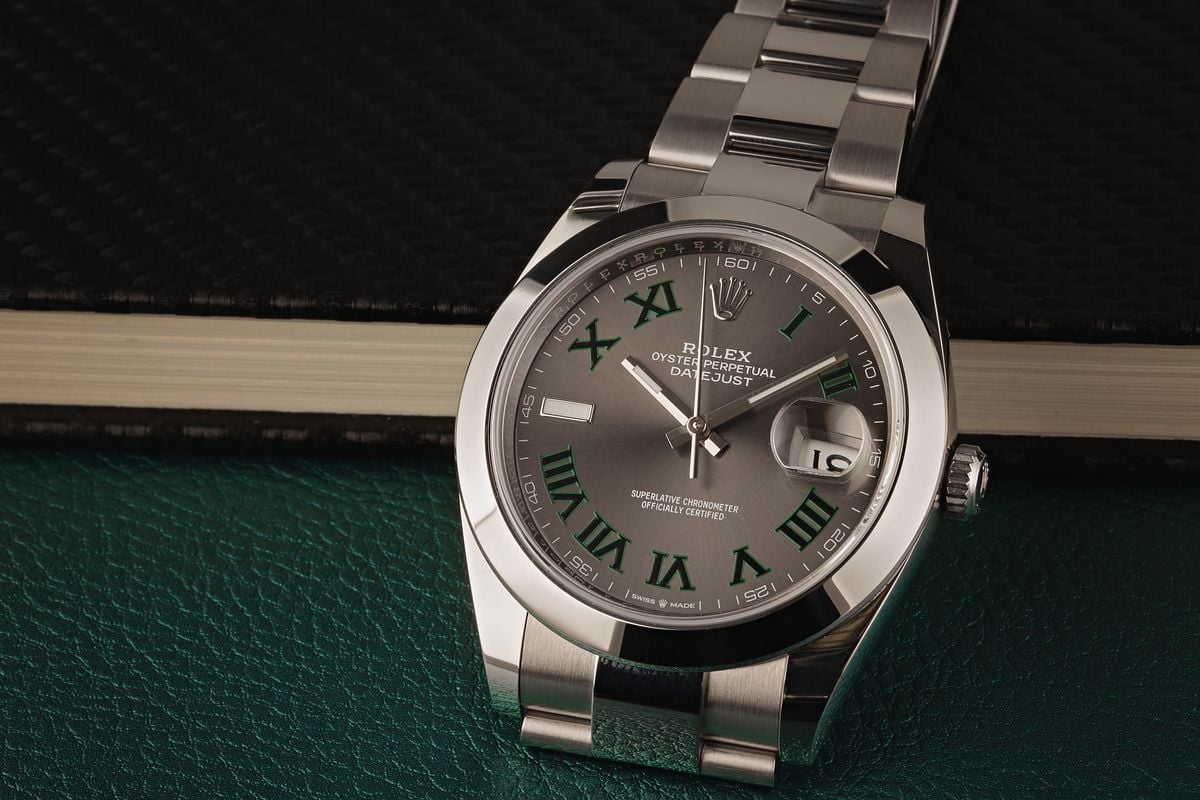
Rolex Submariner vs. Rolex Datejust History
It is important to understand each watch in the context of the greater watch industry during the time that Rolex created it. Despite being introduced less than ten years apart from one another, the driving factors behind the creation of the Submariner and the Datejust are actually incredibly different.
When the Rolex Submariner was first released in 1953, the sport of scuba diving was still in its infancy and the concept of a watch designed specifically for diving was still just beginning to take form. The Rolex Submariner was one of the very first dive watches ever created and the first one able to achieve a water-resistance rating of 100 meters. As the Submariner was intended to be a purpose-built timing tool, aesthetics were entirely secondary to its ability to function on the wrist of a diver, and so the original Submariner watches all have rather stark and utilitarian appearances.
Over the years, the Rolex Submariner has transitioned from tool watch to status symbol, and Rolex has continued to add additional aesthetic options to the Submariner collection as it firmly asserts itself as an outright luxury item. Despite additional dial and bezel colors now being available (along with precious metal versions of the watch) the core aesthetic of the Submariner has remained largely unchanged over the years. While the Submariner watches that Rolex sells today are far more refined and luxurious than the inaugural model, they still are incredibly capable professional dive watches that sit at the absolute top of their class.
Conversely, the Rolex Datejust was created in an era before the concept of a purpose-built tool watch really existed. Rolex’s first sports watch was the Explorer and it did not make an appearance until 1953. When Rolex introduced the Datejust in 1945, most people did not own multiple watches, and whatever watch they did own needed to be reliable and versatile enough to be worn every day and paired with a wide variety of different outfits and attire.
Rolex built much of its reputation by building reliable and water-resistant timepieces that could survive the rigors of everyday use. Like the various Oyster Perpetual models that pre-dated it, the first Rolex Datejust featured the brand’s waterproof Oyster case paired with its self-winding Perpetual movement, granting it the title of being the world’s first chronometer wristwatch with an automatically changing date display. While the Submariner was intended to be an underwater tool, the Datejust was originally positioned as Rolex’s flagship watch and was initially only offered in solid yellow gold.
Over the years, the Datejust collection has grown and it now includes everything from humble stainless steel models, to ultra-luxurious references that are crafted entirely from solid gold and set with diamonds and other gemstones. However, despite the numerous luxury-oriented versions now available, the core philosophy of the Datejust collection has remained unchanged, and the modern Datejust watches that Rolex produces today still offer all of the precision, reliability, and water-resistance necessary to be the only watch that you will ever need.
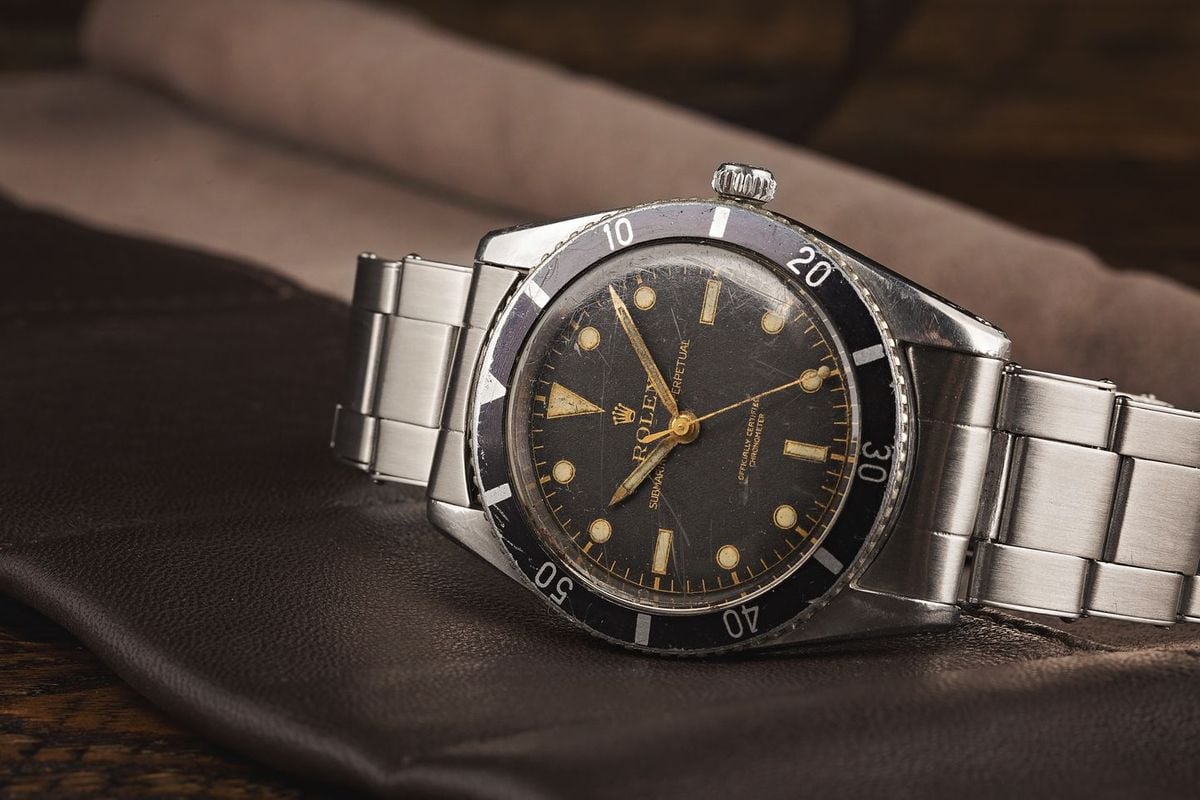
Rolex Submariner History
First introduced in 1953 and released to the public the following year, the Rolex Submariner was one of the world’s very first dive watches. As with the Datejust, the Submariner hit the ground running. It captured the imagination of not only those embarking on the fledgling sport of scuba diving but also those who appreciated a model able to stand up to just about anything on dry land too, all while looking stylish enough to wear all day.
With its monochrome detailing giving it superb legibility, its rotating bezel proving useful in any number of applications, and the power provided by a robust movement, it all added up to an almost faultless example of industrial design. Even so, Rolex still filled up the next decade with a seemingly endless series of tweaks and fine-tuning.
By 1959 the essential format had solidified with the ref. 5512 emerging with crown guards, a 40mm case, and a bezel which overhung the edges slightly to provide better grip. Although the internals would carry on being upgraded periodically, the Submariner’s outward appearance would (more-or-less) continue like that for the next 50-years until 2010, when the Super Case beefed it all up and gave some more wrist presence.
The biggest change during that long half-century came in 1969 when the ref. 1680 was released, granting the Submariner its first date function. From that moment, the range split in two and there have been both date and no-date versions ever since. The latter has been made available exclusively in stainless steel, while the date models have been produced in both 18k yellow and white gold, along with two-tone Rolesor options. Similarly, different color schemes have found their way onto the dials and bezels, with green and blue options proving massively popular, while the 1980s saw a brief foray into gemstone-enhanced hour markers with the Serti dials.
Most recently, the Submariner has received what could be considered a major shakeup. 2020 witnessed a new generation surface, dispensing with much of the Super Case’s bulk and gifting a return to more slender lines. However, the dimensions have increased slightly up to 41mm for the first time, giving the watch a blend of the modern and classic aesthetics that have delighted the majority of its admiring army. Today, it is still the dive watch against which all others are measured, and quite possibly the most important sports model of all time.
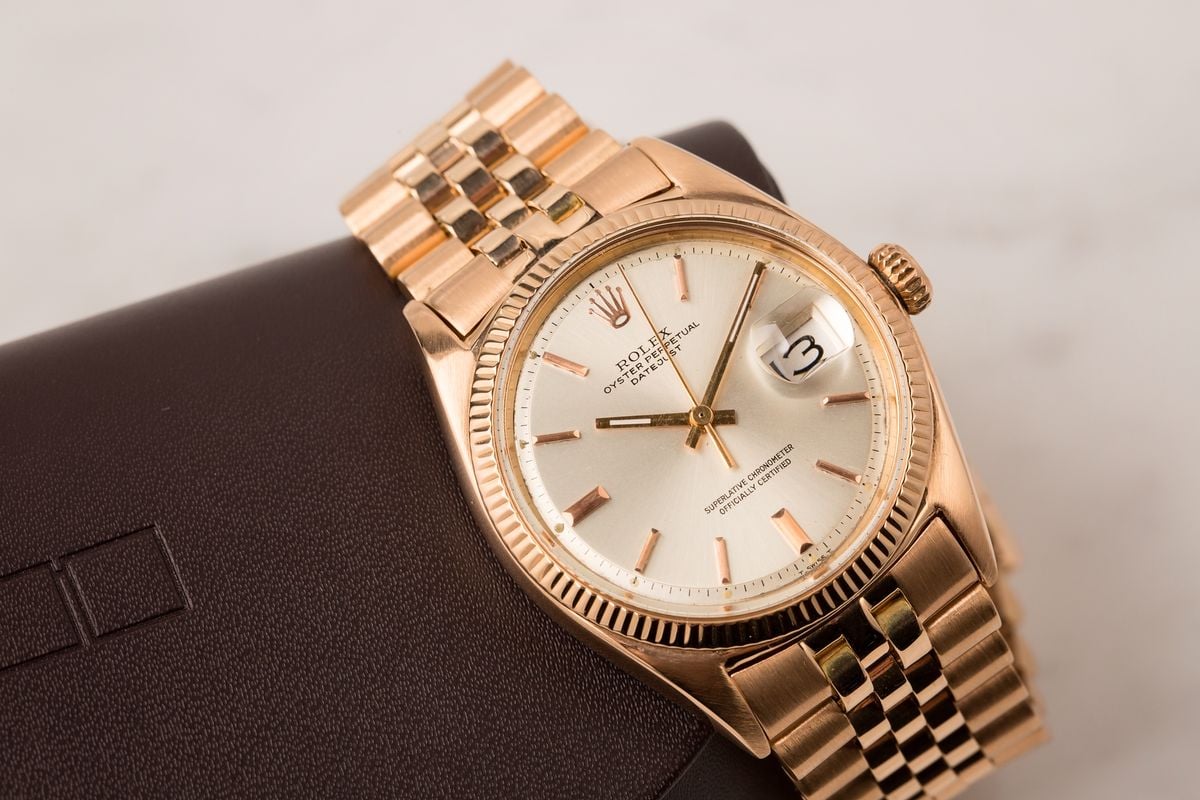
Rolex Datejust History
Although released in the same year WWII ended in 1945, we can really think of the Datejust as the gateway into what is now modern Rolex. Launched to celebrate the company’s 40th year in operation, it was the watch that consolidated two of the brand’s most important innovations – the Oyster case and the Perpetual movement – and added a third, making it the first waterproof, automatically-winding wristwatch with a date function. While that (by today’s standards) is almost quaint in its ambition, three-quarters of a century ago, the Datejust was a revolution. It was an immediate success, helped along by the unsurpassed marketing dexterity of Rolex founder, Hans Wilsdorf. It was he, for example, who ensured his new creation received the tacit patronage of two of the most revered men of the era; Winston Churchill and Dwight D. Eisenhower.
The great British wartime leader was gifted the 100,000th chronometer to roll off Rolex’s production line in 1948, a rose gold Datejust complete with his family’s coat-of-arms engraved on the back. A few years later in 1951, Eisenhower, then a five-star general, received the 150,000th example – the same reference, but in yellow gold.
However, the Rolex Datejust’s term as brand flagship was fairly short-lived. In 1956, it was usurped by the precious-metal-or-nothing Day-Date, and the Datejust embarked on a new role, as Rolex’s more accessible and inclusive dress watch – and one which became something of a testbed for the brand’s never-ending litany of inventions. A special version of the Datejust known as the Turn-O-Graph was actually the first Rolex with a rotating bezel to be put into full production. Additionally, the Datejust (along with the Day-Date) was the collection chosen to be given quartz movement models in the 1970s.
The Rolex Datejust’s blend of more manageable pricing and the utterly overwhelming number of options in which it has been available has consistently resulted in it being the best-selling Rolex collection of all time. Its basic outline was set in stone almost from the very beginning, one that acts as a blank canvas onto which wearers imprint their own identities through their choices of size, metal, bracelet, dial, and bezel combinations. The Datejust has just about every taste covered, whether the owner is happy to hide their light under a bushel or is comfortable being the center of attention. There is also a version to fit every wrist, with models in 28mm, 31mm, 36mm, and the more recent 41mm at the top end.
Today it is as popular as ever, more often than not the go-to option in most people’s search for that ‘one good watch’ – the quality timepiece to last them a lifetime and then be handed down for future generations. A chameleonic and all-inclusive creation from the most successful manufacturer of all time, the Datejust is as good as it gets.
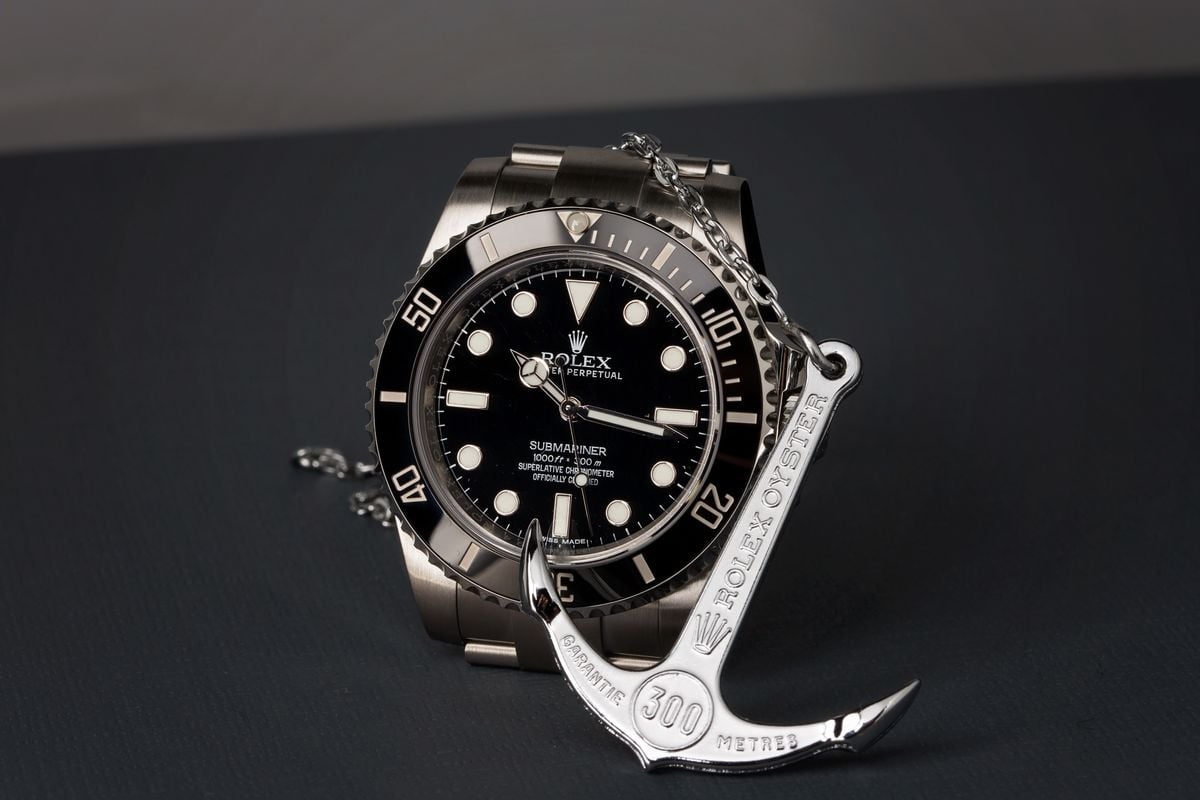
Rolex Submariner vs. Datejust Features and Functionality
Since the Rolex Submariner and the Rolex Datejust were each designed for different uses, there are some key differences between the two watches when it comes to their design, features, and functionality.
For starters, the Submariner is significantly more water-resistant than the Datejust – an obvious requirement considering that Rolex designed it specifically for use while scuba diving. The current-production Datejust offers an official depth rating of 100 meters (330 feet), which is more than adequate for any aquatic situations you are likely to encounter in daily life. However, the Submariner boasts an official depth rating of three times that of the Datejust, offering users 300 meters (1,000 feet) of water resistance.
Additionally, while all Rolex Datejust watches feature date windows at the 3 o’clock location on their dials, the Rolex Submariner is available in both date-displaying and no-date formats. The reason for this difference is that it is incredibly useful to know the date in daily life, while it is far less important to know the date of the month while you are scuba diving. A time-only dial allows for a slightly cleaner and more legible display, and the very first Submariner watches were originally all produced in no-date formats.
Furthermore, the bezels fitted to the Rolex Submariner and the Datejust are also very different – both in terms of their design and functionality. Other than being used to secure the crystal to the case of the watch, the bezel on the Datejust is entirely ornamental. Consequently, the bezel on the Datejust is fixed and it is available in a few different styles that offer different aesthetics. Meanwhile, the bezel on the modern Submariner is a unidirectional rotating timing bezel with a Cerachrom (ceramic) insert and an engraved 60-minute scale. This bezel allows the Rolex Submariner to be used as a rudimentary timer to time events up to one hour in length – perfect for tacking bottom time or decompression stops while scuba diving.
Lastly, while both the Rolex Submariner and the Datejust feature bracelet clasps with built-in extension systems, the one found on the Submariner offers significantly more room for adjustment compared to the one found on the Datejust. The Easylink extension on the Datejust allows for the bracelet to either be expanded or contracted by 5mm on the fly and without the use of any tools. The Glidelock extension on the Submariner also offers tool-free adjustment; however, it permits adjustment of the bracelet in 2mm increments up to a total of 20mm.
The key reasoning behind the different clasp extension systems is again rooted in the different intended uses for the two watches. While the bracelet of the Datejust only needs to be adjusted to compensate for your wrist swelling or shrinking throughout the day, the bracelet on the Submariner needs to be able to be expanded to fit over the sleeve of a thick wetsuit.
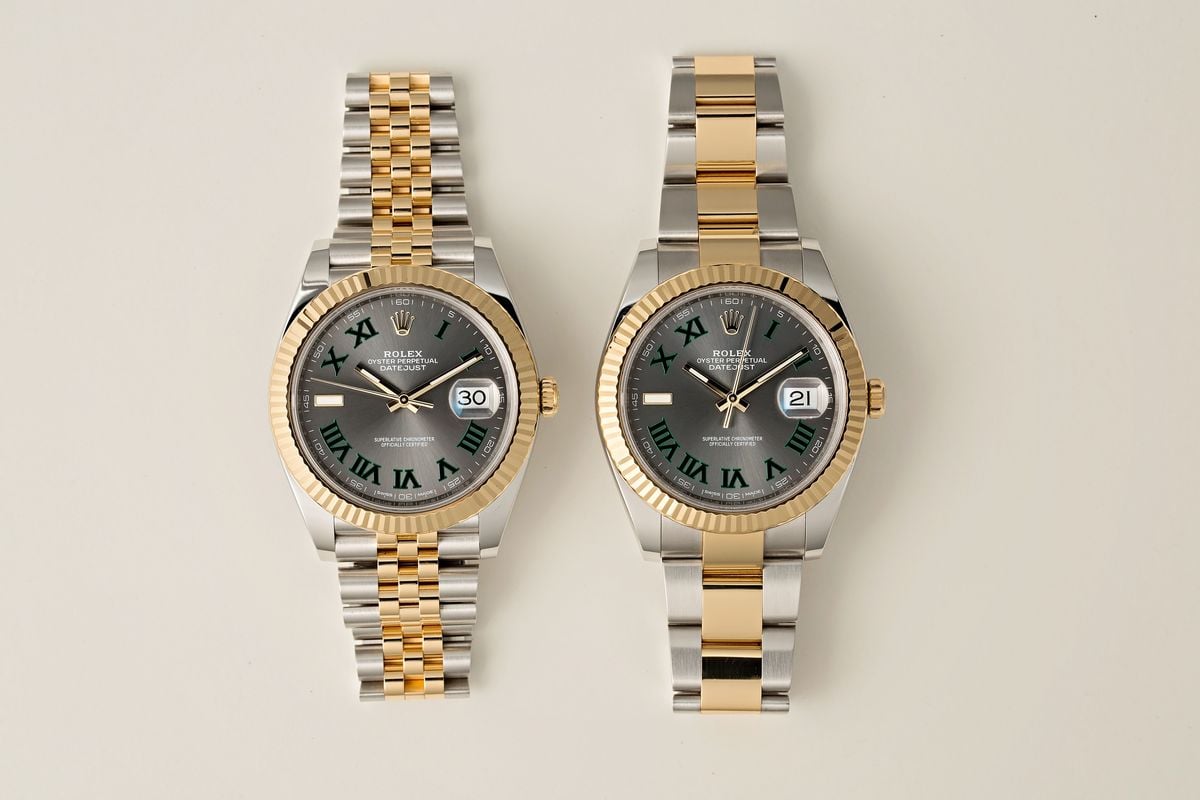
Rolex Submariner vs. Rolex Datejust Options
Beyond the designs and features of the actual watches themselves, one of the key differences between the Rolex Datejust and the Rolex Submariner is the number of different options that Rolex makes available within each collection.
Case Size
Although the Rolex Submariner has grown in size since its initial debut in 1953, it has only ever been offered in a single case size at a time. As of September 2020, all Rolex Submariner watches have 41mm cases regardless of their specific reference or materials. While previous Submariner generations featured 40mm cases and the early models from the 1950s all had cases that measured 37mm and 38mm in diameter, Rolex has never produced additional sizes of the Submariner to be offered alongside the standard model.
On the other hand, the Rolex Datejust collection offers buyers a range of case sizes, ranging from 28mm all the way up to 41mm. The very first Datejust measured 36mm, and this has historically been the classic men’s size within the collection. Additionally, the Lady-Datejust previously had a case diameter of 26mm, so although 28mm is now the smallest Datejust size available, there are still many 26mm options on the pre-owned market. As of 2020, the Rolex Datejust is available in 28mm, 31mm, 36mm, and 41mm case sizes. Additionally, Rolex also produces a 34mm model that largely adheres to the same design and functionality of the Datejust; however, Rolex chooses to call this model the ‘Date’ rather than a Datejust like its siblings.
Dial
Since its introduction, the Rolex Submariner has only ever been available with one style of dial. Although it has been produced in a few different colors over the years and has undergone numerous small revisions and updates, all Submariner dials feature large and luminous hour markers in a mix of bold geometric shapes. When paired with the brand’s signature Mercedes-style hands, this style of dial allows for maximum use of luminous material, providing a highly legible display, even in low light conditions and deep below the surface of the ocean.
The Datejust is the most diverse collection of watches in Rolex’s entire catalog. Nearly every aspect of the watch is available with numerous different options, but it is the dial of the Datejust where you will find the greatest degree of variation. Colors range from traditional options such as black and white, but the collection also offers more unconventional tones such as green, purple, and blue. Rolex Datejust dials can be found with a wide variety of hour markers, including classic stick indexes, Arabic or Roman numerals, and even diamonds. Additionally, Rolex also offers premium dial options that feature either mother of pearl or semi-precious stone surfaces for an even more unique and exclusive appearance.
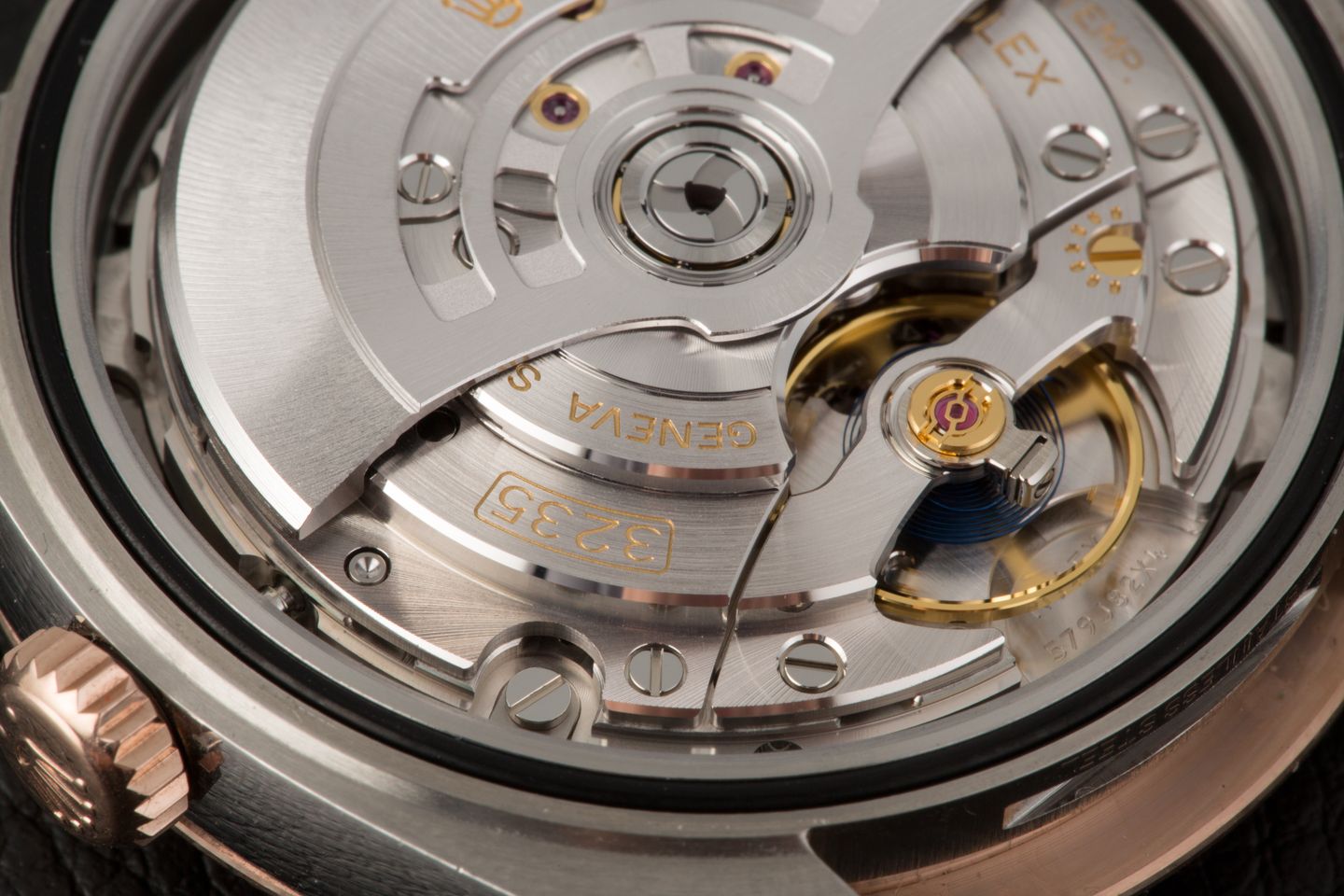
Bezel
All Rolex Submariner watches are fitted with 60-minute rotating timing bezels. While vintage older Submariner models featured bezels with aluminum inserts and vintage references have bidirectional bezels, the Rolex Submariner has always been characterized by its rotating 60- minute bezel. Among the current collection, you can find Submariner bezels in either black, green, or blue; however, regardless of the color, all modern Rolex Submariner bezels feature inserts crafted from Rolex’s proprietary Cerachrom ceramic material.
Since the bezel on the Rolex Datejust is largely a decorative component, a greater degree of variation exists compared to the bezel on the Submariner. While all Rolex Datejust bezels are fixed (with the exception of the rotating bezels found on Datejust Turn-O-Graph/Thunderbird watches), Rolex does offer several different styles. At the present time, Rolex offers Datejust bezels in smooth, fluted, or gem-set styles; however, the brand previously offered other options such as engine-turned and textured. Smooth bezels often provide the watches with a more modern and sporty appearance, while fluted bezels generally offer a more classic and dressy aesthetic. This variety in bezel styles allows the Rolex to take on different appearances, allowing buyers to find the exact model that suits them best.
Movement
Since the Rolex Submariner is offered in both date-displaying and no-date formats, two different movements can be found inside the current generation. As of September 2020, The Rolex Submariner No-Date is powered by the Caliber 3230, while the Submariner Date runs on the Caliber 3235. Both movements are from Rolex’s latest generation of in-house calibers that feature the brand’s proprietary Chronergy escapement and blue Parachrom hairspring. Despite one movement offering an additional date complication, both calibers promise the same timekeeping performance of +2/-2 seconds per day with power reserves of approximately 70 hours.
Although all Rolex Datejust watches feature date displays at their 3 o’clock locations, the wide range of case sizes means that there are still two different movements used in the collection. As of 2020, both the 36mm and 41mm models are powered by the Caliber 3235 (the same movement found inside the Submariner Date), while the 28mm and 31mm models run on the Caliber 2236. Both movements offer the same timekeeping performance of +2/-2 seconds per day; however while the Cal. 3235 features a Parachrom hairspring and a 70-hour power reserve, the Cal. 2236 has a Syloxi hairspring and offers users a power reserve of approximately 55 hours.
Bracelet
Since its introduction in 1953, the Rolex Submariner has only ever officially been offered on the brand’s classic three-link Oyster bracelet. While both the bracelet and clasp have evolved over the years as Rolex continues to refine and improve upon their designs, the Submariner has never officially been made available on any of Rolex’s other bracelet styles such as the Jubilee, President, Pearlmaster, or Oysterflex. The Oyster Bracelet is easily the most utilitarian and sporty option that Rolex offers and this perfectly suits the Submariner’s purpose-built, tool watch aesthetic.
In the same way that the Rolex Datejust is available with a wide range of different dials and bezels, Rolex also offers a number of different bracelet options for the collection. As of 2020, the Rolex Datejust collection is available with the option of either an Oyster, Jubilee, or President bracelet. However, it should be noted that not all bracelet styles are available for all case sizes or metal options. For example, the President bracelet is only fitted to solid gold versions of the 28mm and 31mm Datejust models, while the now-discontinued Datejust II was only ever available with an Oyster bracelet.
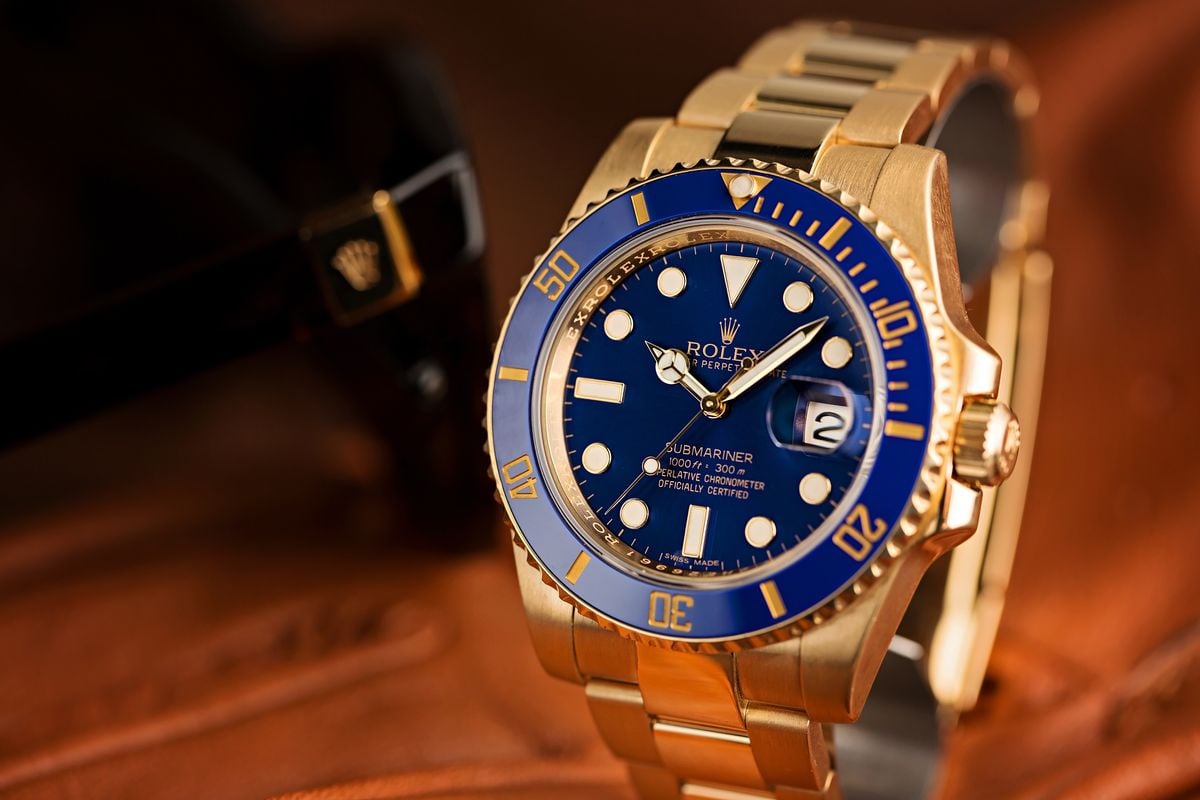
Rolex Submariner vs. Rolex Datejust Price
With both the Datejust and the Submariner having models in a range of metals, there is a broad variation in price across the two collections. Generally speaking, the Rolex Submariner is more expensive than the Rolex Datejust – both when purchased brand-new at retail and when shopping pre-owned on the secondary market. With that in mind, the price difference between Submariner and Datejust watches significantly expands on the pre-owned market due to the different levels of demand for each model.
The most accessible entry points are (technically) the stainless steel models. For the Datejust, prices for the 36mm variant start out at $7,050; for the Submariner, prices start at $8,100 for the no-date model. However, let’s just stop right there and rejoin reality. The chances of you being able to walk into an authorized Rolex retailer and buying a Datejust are actually quite high. With the Submariner, you might be waiting for well over a year.
Due to demand far exceeding supply at a retail level, the Rolex Submariner has fearsome waiting lists at dealers around the globe and in some cases, customers have even had to wait to get on a waiting list. This shortage has propelled many buyers towards the pre-owned market where there is seldom a shortage of brand new models, but where you can expect to be paying anything up to twice (or more) the official asking price. This is simply not the case with the Datejust. While the vast majority of Datejust models retain their value incredibly well (like all Rolex watches), the massive price premiums do not exist on the open market. Most pre-owned Rolex Datejust watches sell for roughly the same as their original retail values, but rarely will you ever see a Datejust selling for more than a few hundred dollars more than what Rolex charges for a brand-new example.
As of 2020, the classic stainless steel Rolex Submariner Date with a black dial and a black bezel retails for $9,150. Meanwhile, the all-stainless steel Rolex Datejust 41 on an Oyster bracelet retails for $7,650. However, on the pre-owned market, the price of the Datejust stays roughly the exact same, while the price of the Submariner is roughly $15,000 due to the presence of multi-year waiting lists at dealers around the world.
Beyond the model itself, there are also other factors that can significantly affect the open market prices of these two watches. While details such as bezel type and dial color can certainly influence the price of pre-owned Rolex Datejust watches, the premiums associated with highly desirable options are only a fraction of those found within the Rolex Submariner collection on the open market. For example, a highly desirable dial option on the Datejust may command a premium of anywhere between several hundred and nearly a couple thousand dollars, while the green bezel version of the stainless steel Submariner Date trades hands for approximately $5,000 more than the all-black version.
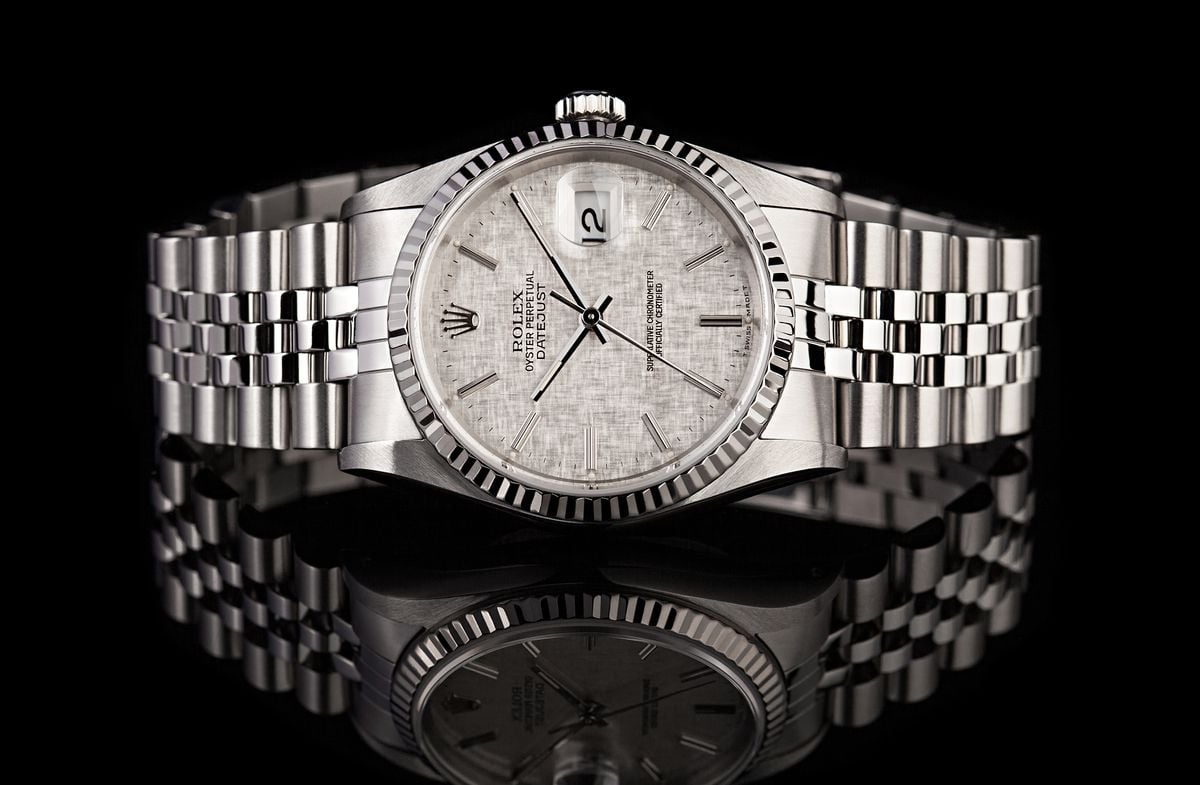
Investment Potential
There are few safer investments in horology than a stainless steel Rolex sports watch. That Submariner you buy today can be sold years from now for around the same price you paid for it – even if you paid a premium to skip the waitlist. In some cases, the value may even increase. That is one of the main benefits of the Submariner (along with other steel Rolex tool watches) being so difficult to obtain at a retail level.
As for the Datejust, the collection is so diverse and ubiquitous that there is rarely a shortage to drive up resale costs on the open market. Therefore, depreciation will generally play a larger factor when comparing new and pre-owned Datejust examples – particularly for precious metal and gem-set versions. That being said, there has always been something of a glass floor beyond which the price of a Rolex Datejust will never drop, so they are still an excellent investment options and often do appreciate in value if given enough time.
Lastly, it is also worth noting that the price of entry on the pre-owned market is significantly different for the Submariner and Datejust collections. The least expensive full-size Rolex Datejust watches are those from older discontinued generations, and these models can be purchased for as little as $3,500 to $4,000 on the pre-owned market. However, the absolute least expensive Rolex Submariner watches set you back anywhere between $8,000 and $9,000 should you wish to add one of them to your collection. Additionally, while you will be hard-pressed to find any Datejust watch selling for more than $20,000 (vintage or modern), collectible vintage Rolex Submariner watches can routinely sell for well into the six-figure range, and the most expensive Submariner ever sold fetched more than a million dollars at an auction in 2018.
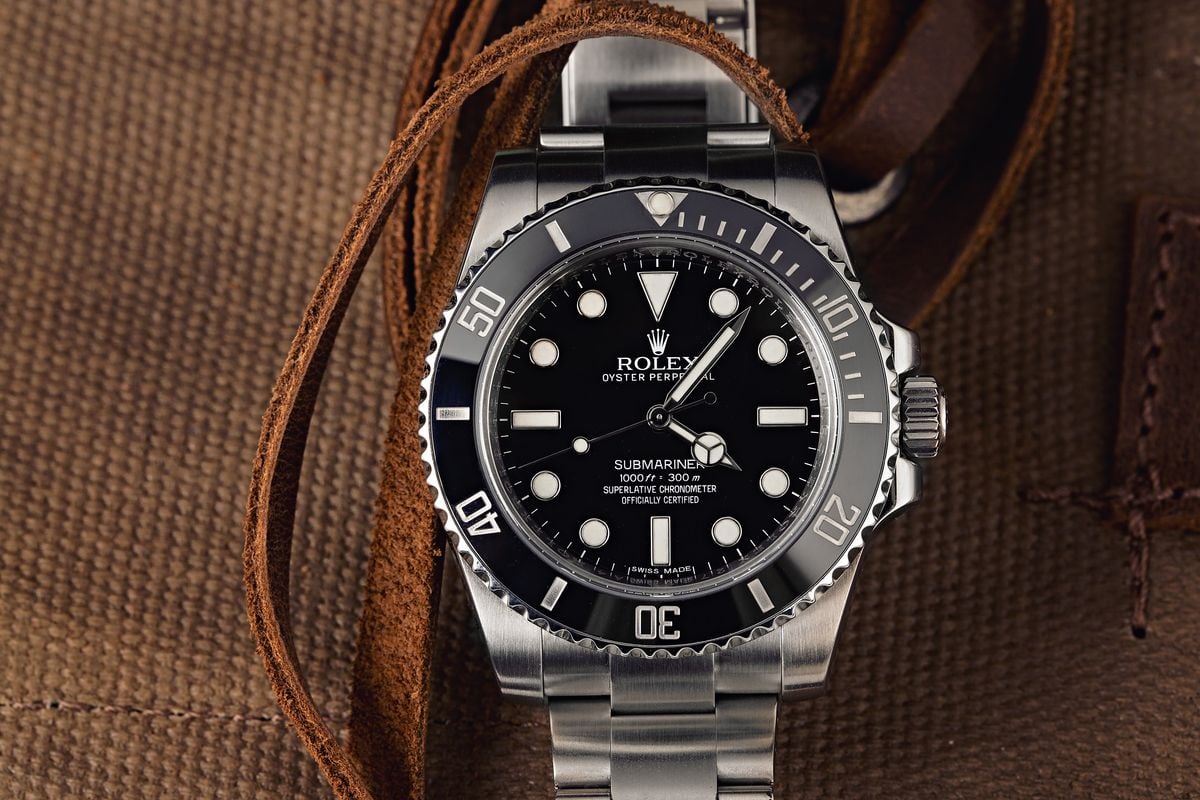
Submariner vs. Datejust: No Wrong Choices
Both the Rolex Submariner and the Rolex Datejust represent two of the most famous watches in the entire world. While the Datejust is the quintessential Rolex watch, designed to be worn every day and in any number of different environments and settings, the Submariner is a purpose-built professional dive watch that has served as the blueprint for underwater timepieces for more than half a century. Two legendary names from the undeniable leader in luxury mechanical watchmaking, either the Submariner or the Datejust will make a superb purchase that will last a lifetime.
Both Rolex watches can effortlessly serve as an all-day, everyday companion without ever looking out of place, regardless of wherever you may be. When trying to decide between the Submariner and the Datejust, there really are no wrong choices and many collectors ultimately choose to add both to their collections due to the numerous differences between these two legendary watches.
The good news is that whichever model you choose (and especially if you choose both), you are taking ownership of the culmination of more than half a century of constant development, fine-tuning, and the pursuit of perfection. In the end, it may not be so much of a question of whether you buy a Rolex Submariner or a Rolex Datejust, but rather which one of these iconic watches are you going to add to your collection first.
